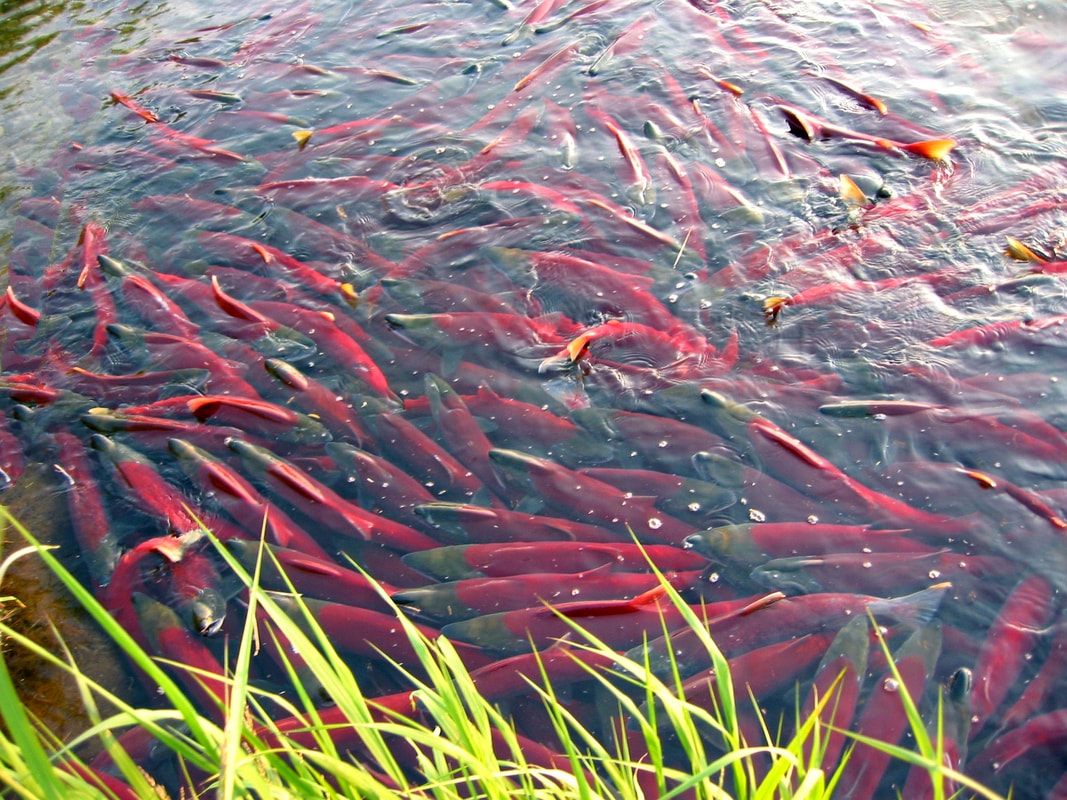|
The Wild Salmon Policy was hailed as “transformative and timely” when it was introduced in 2006, said lead author Michael Price, a biologist at Simon Fraser University.
Also read, 4.5 tons of GMO salmon sold in Canada so far, according to report. But 12 years in, Fisheries and Oceans Canada (DFO) is unable to determine the health or threat status of at least half of the province’s salmon populations, according to the study published in the Canadian Journal of Fisheries and Aquatics. If DFO allows fishing that captures individuals from fragile salmon runs, many genetically and geographically distinct populations could be hurtling toward extirpation “without the necessary warning bells being sounded,” said Price. Annual data-collection trips to spawning streams recorded in DFO’s own data set have declined from a peak of 1,500 in the early ’80s to fewer than 500 last year. Some spawning streams haven’t been visited for years, he said. “Many people consider the Wild Salmon Policy to be a very strong document and it took a long time to draft with a lot of stakeholder input,” he said. “This is a failure of implementation for sure.” Among the action steps outlined in the Wild Salmon Policy is assessment of salmon-population health and the heath of their habitat to inform an ecosystem-based management approach with conservation as its highest goal. The populations are supposed to be robust enough to contribute not only to the next generation of spawners, but also to provide nutrients to wildlife in the receiving systems, such as bears and wolves. Without the necessary data, DFO is flying blind on its conservation mandate, he said. The study found that 42 per cent of the salmon populations that the authors assessed as “poor” would have had a higher rating had Canadian fisheries been curbed. “We know that some of our salmon populations are in distress and for the others we don’t even know,” said Price. In 2016, a federal auditor came to a similar conclusion and recommended that DFO review its scientific survey plan to identify gaps and ensure they are “fully aligned with departmental priorities.” DFO adjusts its data-collection plans in response to the strength of the salmon returns, according to Jennifer Nener, DFO’s director of salmon management. “Part of the issue is that with multiple years of low returns we don’t have to put out the same effort to get the information." “We do have some additional resources coming to the department now so that we can get some further work underway,” said Nener. “With those resources we can actually begin directing effort to those systems where we haven’t been able to get to for a few years.” The department was a frequent target for austerity measures during Stephen Harper’s reign as prime minister. The new Liberal government reinstated a $40-million cut from the DFO’s research and monitoring budget late in 2015. Since the WSP was introduced 12 years ago, budget cuts to Fisheries and Oceans Canada and a perfect storm of ocean conditions, rising river temperatures, predation and competition have left iconic species such as sockeye and chinook in worse shape than ever. Recreational and commercial fisheries for Fraser River sockeye were closed entirely this summer, while the Skeena River system has seen temporary closures for chinook, coho and pink, and season-long closures for sockeye and chum. Only one-third of the 4 1/2 million sockeye expected to enter the Fraser this summer have returned, while the David Suzuki Foundation dubbed the decline of Fraser chinook as “critical.” The DFO’s Albion test fishery usually produced between nine and 30 chinook a day in the ’80s and ’90s, but in July 2017 produced between zero and two chinook per day. Friday, the foundation called for the closure of the Fraser River chinook fishery and encouraged recreational fishers to do so voluntarily without waiting for the DFO to close the fishery. “The situation for Fraser River chinook couldn’t be worse,” said the foundation’s western director, Jay Ritchlen. “We’re asking the government to immediately close chinook fisheries to protect these fish and the endangered southern-resident killer whales that depend on them for food.” SOURCE Randy Shore, Vancouver Sun
0 Comments
Leave a Reply. |
Advertisement
News & Updates
Stay informed with the latest news around foodservice, agriculture and other related food news. Advertisement Opportunities
|


 RSS Feed
RSS Feed


